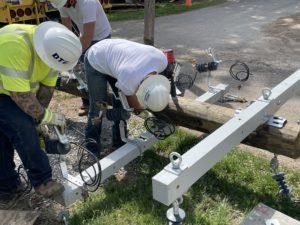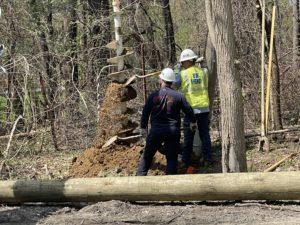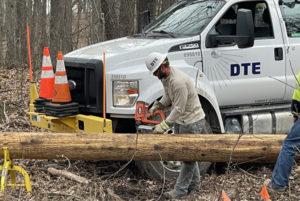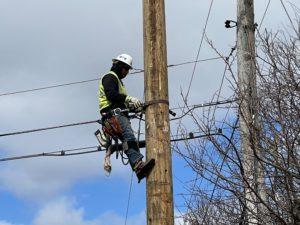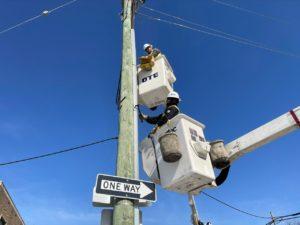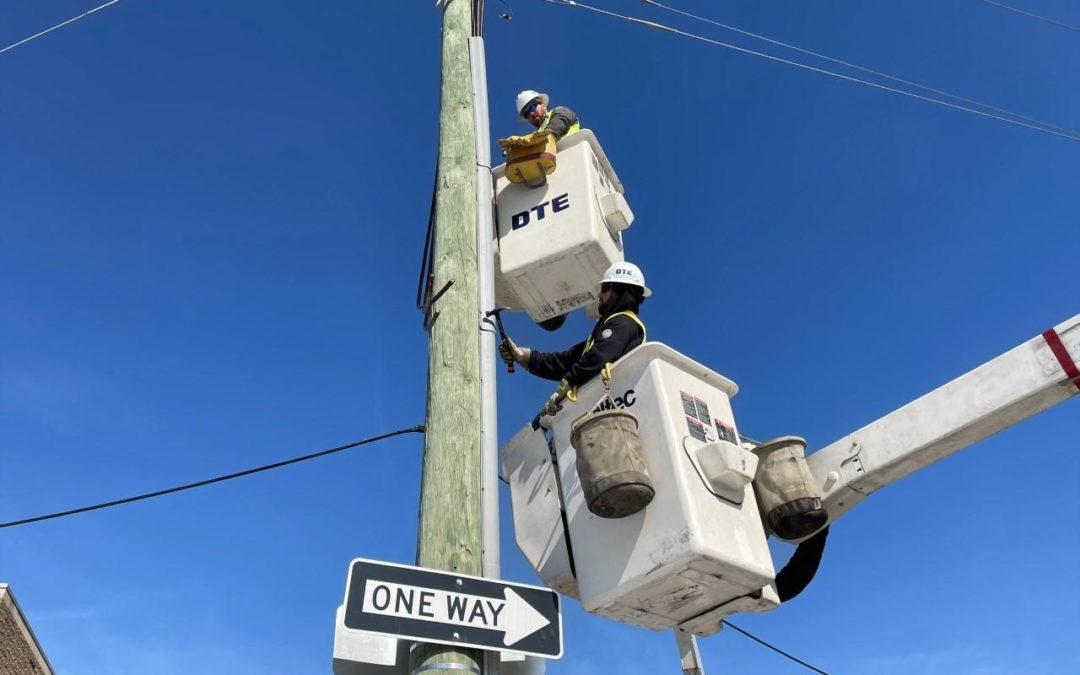DTE crews have been doing many upgrades to our infrastructure, and one of the reoccurring improvements is installing and “framing” new utility poles to boost power reliability to homes and businesses. But what if we told you that framing of poles holding above-ground wires can improve the grid of power lines buried underground? And better yet, did you know this work is being done right now in your community?
“Framing a pole is basically putting all the material on the pole,” said Kai, an area supervisor and longtime electric worker. “This would include material such as crossarms, insulators, brackets, etc. Sometimes we frame the pole on the ground and other times we place the pole first and frame the pole from the buckets.”
You can read more about the anatomy of a pole by clicking HERE.
Upgrading utility poles to better withstand high winds and severe storms is a proven and timely way to ensure better service for our customers. This increases the reliability, capability and resilience of our electric system.
A lot of customers often ask about putting wires underground. While we are putting new lines underground where it makes sense, it’s not always the best solution (you can read more about that HERE). But when you see us installing a new pole, know that in many cases this above-ground work is connecting to underground lines to improve the grid you don’t see.
These poles are called cable poles and you’ve probably seen a cable pole and just not realized it. It’s a pole that has a wire running straight down along the side connecting the overhead system to the underground system. The wire is thin and protected inside a wooden casing. These are often found near recently constructed buildings or at the entrances of newer subdivisions.
You may see more of our crews in the coming months as part of our accelerated electric reliability projects in your area, including more tree trimming and infrastructure updates. All these projects are underway to improve your service and reliability for the short- and long-term.
Make sure to regularly check the Southfield community page to learn more about what’s going on in your neighborhood. You can also follow DTE on Facebook and Twitter for even more updates and information.
